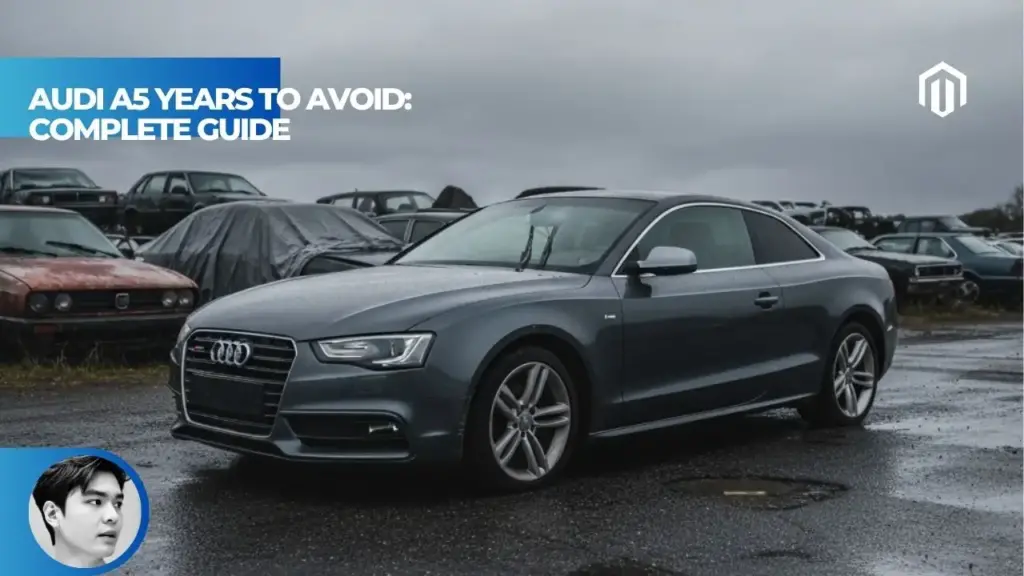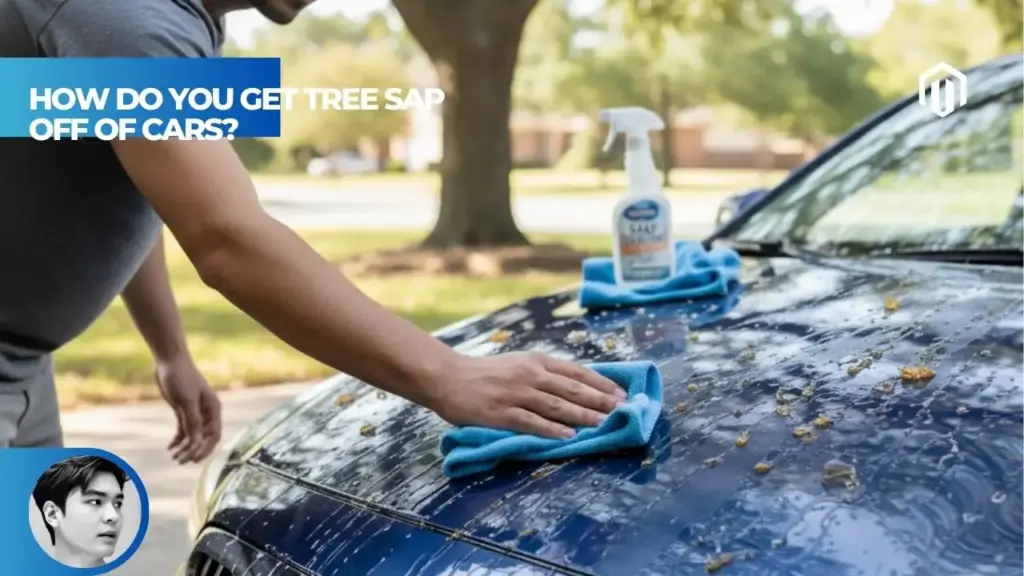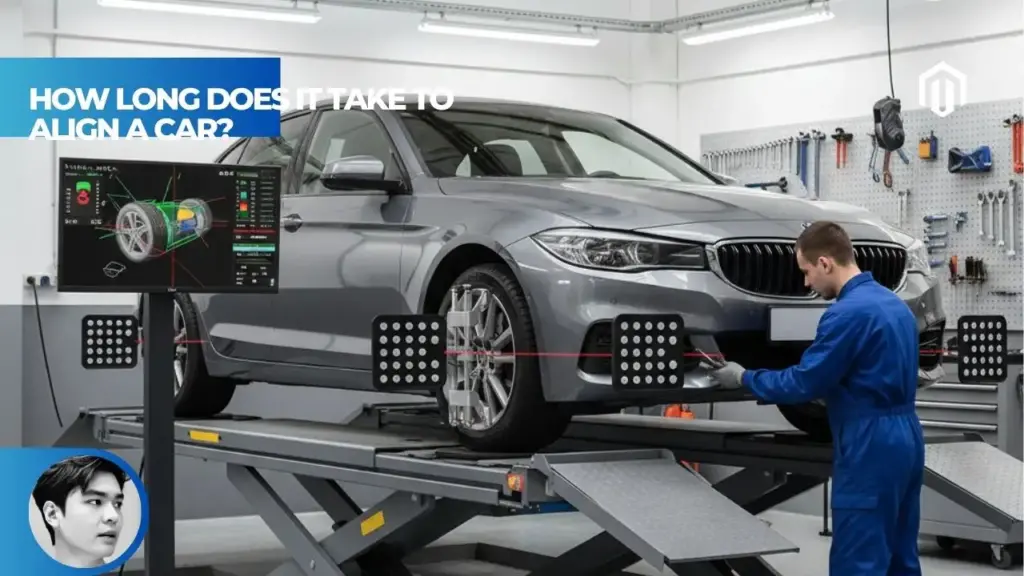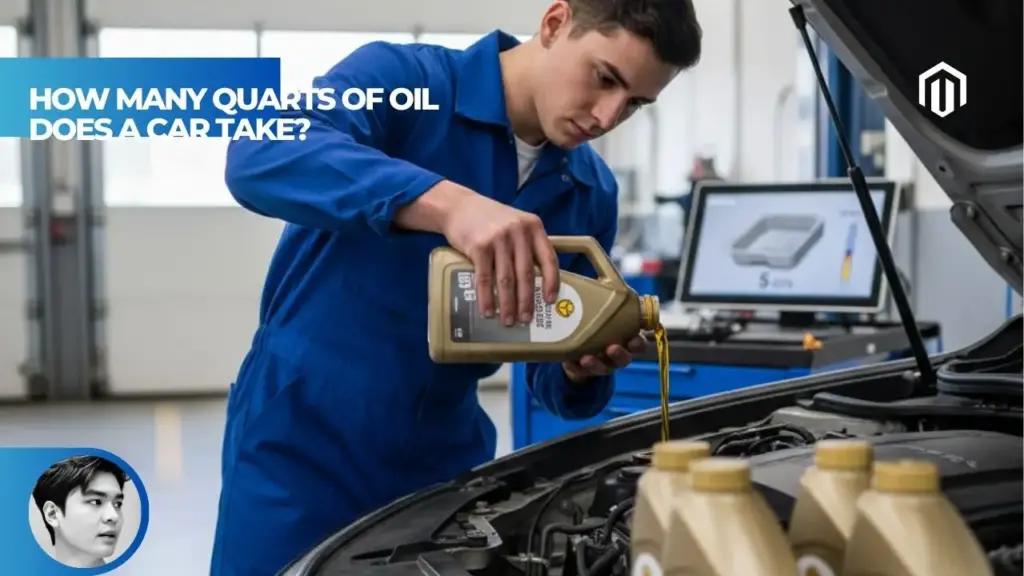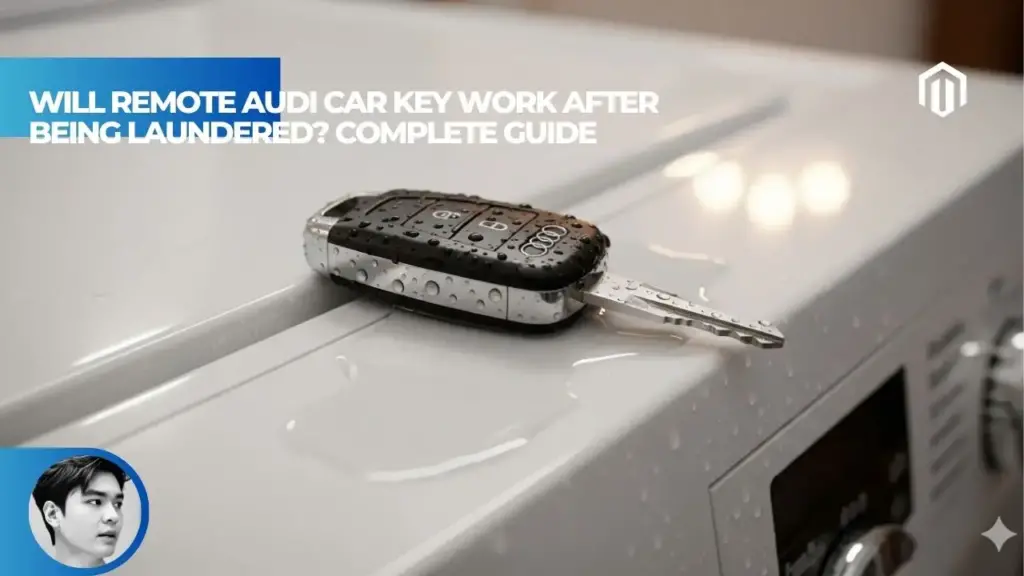You may also like:
When shopping for a used Audi A5, avoid the 2010-2014 and 2018-2019 model years due to significant reliability problems and costly repairs. The 2011 A5 stands out as the most problematic year, with excessive oil consumption requiring up to one quart every 1,000 miles, timing chain tensioner failures, and broken pistons leading to complete engine replacement[1]. Understanding which A5 years to steer clear of can save American buyers from facing repair costs exceeding $15,000 for major engine work while ensuring a more reliable luxury coupe ownership experience.

Understanding Audi A5 Reliability Issues
What Makes Certain A5 Years Problematic
Technical Service Bulletin patterns reveal systematic problems across specific A5 generations, with problematic years showing distinct failure trends in critical systems. The first-generation A5s (2008-2016) experienced more widespread reliability issues compared to the second generation, though certain second-generation years still present concerns[2].
First-generation vs second-generation differences show varying problem areas:
- First-generation (2008-2016): Oil consumption issues, Takata airbag recalls, MMI system failures, and Multitronic CVT transmission problems
- Second-generation (2017+): Improved engine reliability, enhanced electrical systems, but early years still faced teething problems
Consumer complaint categories consistently highlight engine problems (55%), electrical issues (25%), and transmission failures (15%) as the most reported concerns across problematic model years[3]. The 2.0 TFSI engines prior to 2012 have an inherent design fault leading to excessive oil consumption, affecting A5, A4, and Q5 models with engine codes CAEB, CDNC, and CNDC[4].
How to Identify Problem Years Before Buying
Consumer Reports reliability ratings provide clear indicators of problematic A5 years through comprehensive owner surveys and expert analysis. The organization expects the 2025 A5 to be more reliable than the average new car based on data from previous generations and Audi’s brand score[5].
NHTSA complaint database analysis reveals specific patterns for problematic years:
- High complaint volume relative to production numbers
- Multiple Technical Service Bulletins for identical issues
- Safety recalls affecting critical systems like airbags and fuel systems
The NHTSA database shows the 2011 A5 with extensive complaints about excessive engine oil consumption, with owners reporting consumption rates of 1.08 quarts per 1,000 miles[1]. CarComplaints.com data confirms systematic issues across multiple model years, particularly highlighting the 2010-2014 period as especially problematic.
Cost Impact of Problematic Model Years
Average repair costs for the worst A5 years significantly exceed reliable alternatives, with engine-related repairs representing the most expensive category. Oil consumption repairs typically range from $3,000-$8,000, while complete engine replacement can cost $15,000-$20,000[6].
Engine replacement and major component failure expenses include:
- Complete 2.0 TFSI engine replacement: $15,000-$20,000
- Piston and ring replacement for oil consumption: $3,000-$5,000
- Timing chain tensioner replacement: $1,500-$2,500
- Water pump and coolant system repairs: $800-$1,200
Long-term ownership cost comparisons show problematic A5 years costing significantly more than reliable alternatives. Automotive analysis from Autvex indicates that avoiding problematic years can save owners $8,000-$15,000 over a five-year ownership period compared to problematic model years[7].
Insurance implications also affect problematic years, with some insurers charging higher premiums for models with known reliability issues or extensive recall histories.
Worst Audi A5 Years to Avoid (2010-2014, 2018-2019)
2010-2012 A5: Takata Airbag Crisis Years
The 2010-2012 A5 model years were severely affected by the Takata airbag recall, which caused airbag deployment failures and metal fragment injuries to occupants. The defective inflators can explode when deployed, sending sharp shrapnel flying at drivers and passengers[8].
Major safety concerns included:
- Airbag inflators rupturing and causing fatal injuries (22 deaths worldwide)
- Metal fragments from airbag deployment causing lacerations and injuries
- Extended recall repair timelines due to parts shortages lasting years
- Some owners driving unsafe vehicles while waiting for repairs
Multiple electrical system problems plagued these years:
- MMI infotainment system freezing requiring dealer intervention
- Engine management system failures causing stalling
- Warning light malfunctions creating safety hazards
- Electrical shorts affecting multiple vehicle systems
The Volkswagen and Audi $42 million settlement in 2021 provided compensation for owners affected by the recall delays and associated costs[9]. Extended recall repair timelines meant some owners waited over two years for parts availability, with many driving potentially dangerous vehicles during this period.
2011 A5: The Most Problematic Year
The 2011 A5 earned the distinction as the single worst model year due to multiple catastrophic problems affecting engine reliability and safety systems. Excessive oil consumption became the most widespread issue, with engines burning up to one quart every 1,000 miles due to defective piston rings[1].
Critical engine problems included:
- Oil consumption rates of 1+ quart per 1,000 miles requiring constant monitoring
- Timing chain tensioner failures causing engine noise and potential catastrophic damage
- Broken pistons requiring complete engine rebuilds or replacement
- Water pump coolant leaks leading to engine overheating and damage
Drivetrain problems affected daily usability:
- Wheel rubbing issues during morning starts
- Transmission shifting problems with Multitronic CVT
- Power delivery inconsistencies affecting acceleration
- Unusual noises from drivetrain components
One Puerto Rico owner documented their vehicle consuming 1.08 quarts in 1,000 miles despite following all recommended maintenance procedures. Audi of America acknowledged that 126,000 vehicles presented excessive oil consumption but attempted to avoid warranty coverage through technicalities[1].
2013-2014 A5: Engine Failure Peak Years
The 2013-2014 model years represented the peak of A5 engine reliability problems, with complete engine failures occurring under 100,000 miles in numerous cases. These years experienced the highest rate of catastrophic engine problems requiring complete replacement[10].
Major engine component failures:
- Cam belt tensioner failures causing timing issues and valve damage
- Fuel injector malfunctions resulting in misfiring and engine damage
- Drive chain failures affecting engine timing and compression
- Valve spring cracking leading to complete compression loss
Zero cylinder compression issues required complete engine rebuilds:
- Internal engine component failures destroying compression
- Piston ring failures causing oil burning and power loss
- Cylinder head problems requiring expensive machining work
- Complete engine replacement often more cost-effective than rebuilds
Many owners reported engine failures under warranty being denied due to alleged maintenance issues, despite following all recommended service intervals. The complexity of proving maintenance compliance created significant disputes between owners and Audi dealerships.
2018-2019 A5: Second Generation Early Problems
Despite being part of the redesigned second generation, the 2018-2019 A5 continued experiencing reliability problems that carried over from development issues. These years proved that newer doesn’t always mean more reliable[11].
Rapid tire wear became a signature problem:
- Tires becoming unsafe after only 13,000 miles
- Uneven wear patterns that couldn’t be corrected through alignment
- Frequent tire replacement costs averaging $1,200+ annually
- Safety concerns from reduced traction and handling
Electronic system malfunctions affected daily operation:
- Electronic trunk malfunctions causing injuries to users
- Sun visor breakage while driving creating safety hazards
- Backup camera glitches affecting parking safety
- Connectivity issues with smartphones and Apple CarPlay
Oil leaks and faulty thermostats continued despite TSB releases:
- Engine oil leaks requiring repeated repairs
- Thermostat failures causing overheating issues
- Coolant system problems affecting engine temperature regulation
- Warranty disputes over repeated failures
Additional Years Requiring Caution (2009, 2012, 2020)
2009 A5: Debut Year Issues
The 2009 A5 represented the inaugural model year, suffering from typical first-year production problems that affect most new vehicle launches. While not as severely problematic as later years, it still requires careful evaluation[12].
First-year production problems included:
- Design flaws not identified during pre-production testing
- Manufacturing process issues affecting build quality
- Software bugs in early electronic systems
- Component supplier issues affecting parts quality
Limited recall history compared to later years, but early reliability concerns included electrical system inconsistencies and minor engine management issues. Parts availability challenges for the inaugural model year created longer repair times and higher costs for specialized components.
2012 A5: Continued Takata Problems
The 2012 model year extended the Takata airbag recall issues beyond the initial 2010-2011 years, with 6 total complaints and 29 reported problems documented by consumer reporting agencies[13].
Extended airbag recall issues included:
- Continued safety risks from defective inflators
- Parts shortage delays extending into 2013-2014
- Some owners experiencing multiple repair attempts
- Legal complications from recall notification delays
Ongoing electrical system malfunctions carried over from earlier years:
- MMI system failures requiring complete module replacement
- Engine management system glitches causing performance issues
- Warning light malfunctions creating diagnostic challenges
- Electrical shorts affecting lighting and accessory systems
2020 A5: Mixed Reliability Reports
Despite being part of the mature second generation, the 2020 A5 experienced 4 reported problems and 4 recalls for various system failures, indicating inconsistent quality control[14].
System failures included:
- Electrical component malfunctions affecting advanced features
- Software glitches in infotainment and driver assistance systems
- Minor engine management issues requiring dealer attention
- Sporadic transmission shifting inconsistencies
Inconsistent owner experiences ranged from completely trouble-free ownership to multiple warranty claims, suggesting quality control variations during production. Warranty claims often required multiple dealer visits to properly diagnose and resolve issues.

Most Reliable A5 Years to Consider Instead
2015 A5: Final First-Generation Excellence
The 2015 A5 achieved remarkable owner satisfaction with 84% of owners rating it 5 out of 5 stars, making it the most successful first-generation model year[15]. With only 1 complaint and 8 problems reported across all consumer databases, it represents excellent value in the used market.
Outstanding reliability metrics:
- Lowest complaint rate of any first-generation A5
- Resolved oil consumption issues affecting earlier years
- Mature first-generation platform with known solutions
- Strong resale value retention
3 recalls were issued but overall owner satisfaction remained exceptionally high, with most recalls addressing minor issues that didn’t affect daily reliability. The 2015 model year benefits from years of refinement and problem resolution from earlier first-generation issues.
2017 A5: Second Generation Launch Success
The 2017 A5 marked the successful launch of the second generation with 0 complaints and only 3 problems reported, demonstrating significant improvement over problematic years[16]. 2 recalls were issued but overall reliability showed dramatic improvement.
Second-generation improvements:
- Resolved oil consumption problems from first generation
- Enhanced electrical system architecture
- Improved build quality and component reliability
- Current B9 platform stability providing foundation for future years
The 2017 launch year proved that Audi successfully addressed the systematic issues plaguing earlier generations, making it an excellent entry point for second-generation A5 ownership.
2021-2023 A5: Current Generation Reliability
Recent model years demonstrate continued reliability improvements with minimal complaints and recalls:
- 2021 A5: Only 1 complaint and 2 problems reported
- 2022 A5: 0 complaints with 2 minor recalls
- 2023 A5: 0 complaints and 0 recalls to date
Current generation benefits:
- Mature second-generation platform with proven reliability
- Advanced safety systems with solid track record
- Modern infotainment without early adoption problems
- Comprehensive warranty coverage for peace of mind
Consumer Reports expects continued reliability improvements for 2024 and 2025 model years based on platform maturity and Audi’s brand improvements[5].
Common A5 Problems to Watch Across All Years
Engine-Related Issues
Oil consumption patterns remain the most persistent A5 problem, particularly affecting 2.0 TFSI engines from 2008-2012 with inherent design flaws in piston rings and PCV systems[4]. Normal consumption should not exceed one quart per 5,000 miles.
Timing chain tensioner failure symptoms:
- Rattling noise during cold starts lasting more than 30 seconds
- Engine performance degradation and rough idling
- Check engine light with timing-related error codes
- Complete engine failure if not addressed promptly
Water pump leaks and cooling system problems:
- Coolant leaks requiring frequent refilling
- Engine overheating during normal operation
- Sweet smell in passenger compartment indicating coolant leaks
- Water pump replacement costs averaging $800-$1,200
Fuel injector malfunctions cause engine stalling, misfiring, and reduced fuel economy. Replacement typically costs $400-$600 per injector, with multiple injectors often requiring simultaneous replacement.
Electrical and Technology Problems
MMI infotainment system issues consistently appear across A5 generations:
- Screen freezing requiring complete system resets
- Power issues preventing system startup
- Media device recognition failures affecting USB and Bluetooth
- Audi navigation system GPS accuracy problems
Warning lights and intermittent electrical faults:
- False warning lights creating unnecessary concern
- Electrical shorts affecting lighting systems
- Battery drain from parasitic electrical draws
- Sensor malfunctions triggering multiple error codes
Advanced safety system malfunctions in newer A5s include backup camera glitches, electronic trunk failures causing injuries, and connectivity issues with modern smartphones requiring frequent software updates.
Transmission and Drivetrain Issues
Multitronic CVT transmission problems affect 2007-2016 A5 models with continuous variable transmissions, causing power loss, shuddering, and overheating during demanding driving conditions[17].
S tronic automatic transmission malfunctions:
- Unexpected gear shifting during acceleration
- Transmission hesitation from standstill
- Jerky shifting between gears
- Complete transmission failure requiring replacement
Drivetrain noise and wheel rubbing problems:
- Unusual noises from differential components
- Wheel rubbing during turning, especially during cold starts
- Quattro all-wheel drive system malfunctions
- CV joint failures requiring expensive replacement
Power loss issues manifest as reduced acceleration, especially when climbing hills or merging onto highways. Many owners report transmission malfunction warnings that require immediate dealer attention.
Pre-Purchase Inspection Checklist for Used A5s
Engine and Performance Assessment
Oil consumption testing requires extended evaluation periods to identify problematic engines. Request documentation of oil consumption over the previous 5,000 miles, and be suspicious of any A5 requiring frequent oil additions between service intervals.
Timing chain tensioner evaluation:
- Listen for rattling noises during cold starts
- Test engine performance during acceleration
- Check for engine error codes related to timing
- Verify timing chain replacement history if available
Cooling system inspection:
- Pressure test coolant system for internal leaks
- Inspect water pump for signs of leakage
- Check coolant level and color consistency
- Test thermostat operation under load conditions
Engine compression testing can reveal internal damage from oil consumption or timing chain issues. All cylinders should show consistent compression readings within manufacturer specifications.
Electrical System and Technology Verification
Complete infotainment system testing should verify all multimedia functions, navigation accuracy, and smartphone connectivity. Test Apple CarPlay and Android Auto functionality thoroughly.
Diagnostic scanning using professional equipment can reveal stored error codes indicating ongoing problems. Many intermittent issues store codes even when warning lights aren’t currently active.
Airbag system operation requires verification of proper functionality and Takata airbag recall completion. Request certificates proving recall work completion, especially for 2010-2012 model years.
Electronic trunk and safety feature testing should include backup camera operation, parking sensors, and any electronic trunk mechanisms that have caused injuries in problematic years.
Documentation and Service History Requirements
Complete maintenance record verification must demonstrate regular oil changes, timing chain service, and cooling system maintenance. Look for patterns of repeated repairs indicating ongoing problems.
Takata airbag recall completion certificates are essential for 2010-2012 model years. Unresolved recalls indicate potential safety hazards and legal liability issues.
TSB work completion documentation should show resolution of known Technical Service Bulletins, particularly those addressing oil consumption, timing chain issues, and electrical problems.
Extended warranty options deserve serious consideration for any A5 outside original factory warranty. Audi service requirements can be expensive, making extended coverage valuable for complex luxury vehicles.
Alternative Luxury Coupe Options to Consider
Direct A5 Competitors by Reliability
BMW 4 Series reliability comparison shows mixed results compared to A5, with both German luxury brands requiring higher maintenance costs than Japanese alternatives. The 4 Series has a 5.8/10 reliability rating compared to varying A5 ratings by year[18].
| Comparison Factor | Audi A5 | BMW 4 Series | Lexus RC |
|---|---|---|---|
| Reliability Rating | 6.5/10 (varies by year) | 5.8/10 | 7.5/10 |
| Average Life Expectancy | 10.0 years | 10.2 years | 12.8 years |
| 200k Mile Probability | 2.3% | 2.2% | 18.5% |
Mercedes C-Class Coupe dependability typically matches A5 reliability but with higher maintenance costs. Lexus RC reliability advantages include significantly longer life expectancy and much higher probability of reaching 200,000 miles[19].
Value-Oriented Premium Alternatives
Infiniti Q60 reliability metrics show improved dependability over recent years with the naturally aspirated V6 engine proving more reliable than turbocharged German alternatives. Warranty coverage includes 4-year/60,000-mile comprehensive coverage.
Cadillac ATS Coupe dependability varies significantly by model year, with some years showing excellent reliability while others experience significant problems. Service costs typically run lower than German competitors due to domestic parts availability.
Genesis G70 reliability record benefits from Hyundai’s quality improvements and industry-leading warranty coverage including 10-year/100,000-mile powertrain protection. Initial quality ratings consistently exceed both Audi and BMW.
Budget-Friendly Reliable Coupe Options
Honda Accord Coupe (discontinued but available used) offers proven long-term dependability with significantly lower maintenance costs than any luxury alternative. Average life expectancy exceeds 13 years with proper maintenance.
Toyota Camry reliability record includes consistently high ratings and lower ownership costs than any luxury competitor. Total cost of ownership typically runs $8,000-$12,000 less over five years compared to problematic A5 years.
Mazda6 features offer luxury-level interior amenities at mainstream pricing with above-average reliability ratings. Maintenance costs remain significantly lower than German luxury alternatives while providing similar driving experience.
For buyers considering alternatives, researching how many miles Audis can last compared to Japanese competitors reveals significant long-term cost differences favoring non-luxury brands.
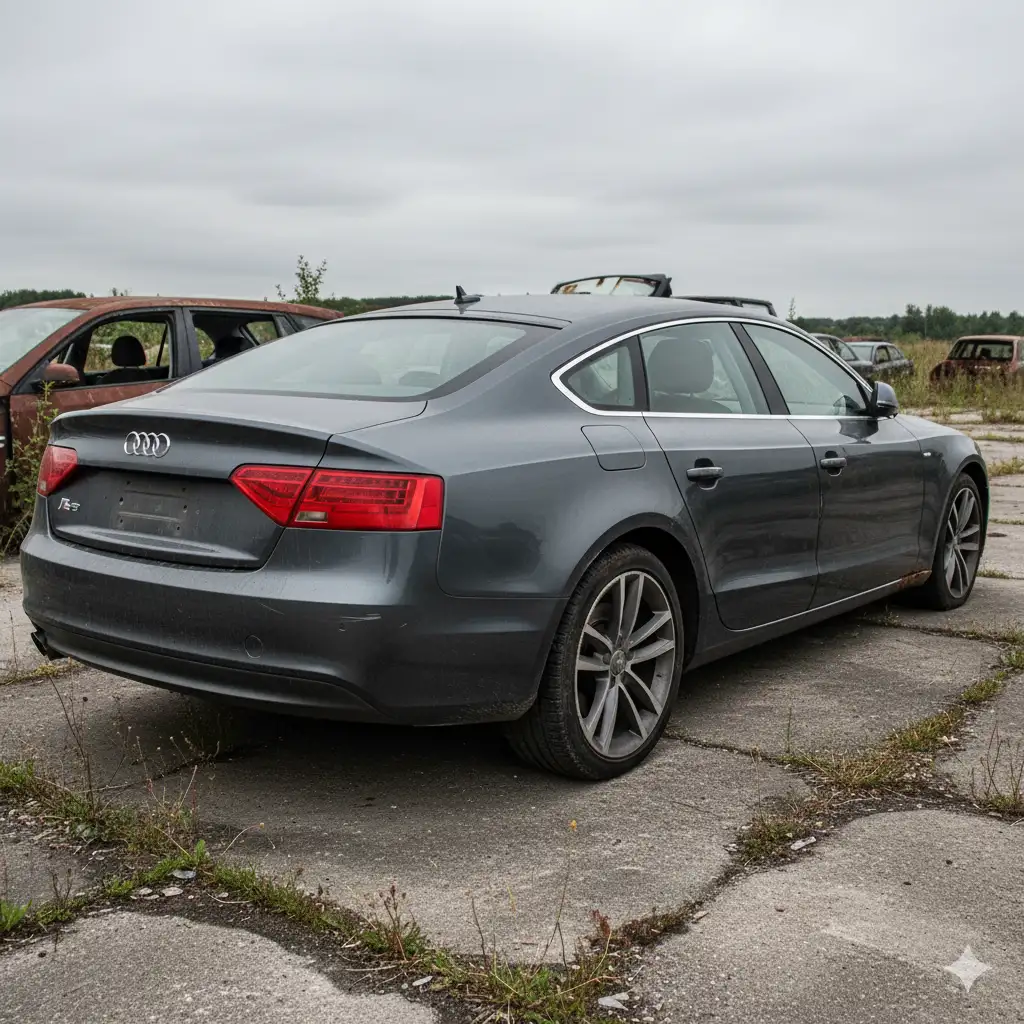
Key Takeaways
- Avoid these specific A5 years: 2010-2014 (Takata airbag, oil consumption, engine failures) and 2018-2019 (second generation early problems) due to documented reliability issues
- Target reliable A5 years: 2015 (84% 5-star ratings), 2017 (0 complaints), and 2021-2023 (minimal problems) for best ownership experience
- Budget for oil consumption testing: All 2008-2012 A5s require extended oil consumption evaluation costing $200-$400 but potentially saving $15,000+ in engine replacement
- Prioritize recall completion: Takata airbag recall completion is mandatory for 2010-2012 models due to potentially fatal safety risks
- Consider total ownership costs: Problematic A5 years can cost $8,000-$15,000 more over five years compared to reliable alternatives or competing brands
- Evaluate extended warranty coverage: Any A5 outside factory warranty should include extended coverage due to high potential repair costs
- Research alternatives thoroughly: Lexus RC offers 18.5% probability of reaching 200k miles compared to A5’s 2.3%, with significantly lower maintenance costs
FAQs
What year Audi A5 should I absolutely avoid?
The 2011 Audi A5 is the single worst year to avoid, with excessive oil consumption up to one quart every 1,000 miles, timing chain tensioner failures, and complete engine breakdowns requiring replacement. This year has the highest complaint rate and most severe problems[1].
Which A5 years have the oil consumption problem?
The 2008-2012 A5 years with 2.0 TFSI engines (engine codes CAEB, CDNC, CNDC) have inherent design flaws causing excessive oil consumption. Audi acknowledged 126,000 affected vehicles, with consumption rates often exceeding one quart per 1,000 miles[4].
Are A5 Sportback years the same as regular A5?
Yes, A5 Sportback years follow the same reliability patterns as coupe and convertible models since they share identical engines, transmissions, and major components. The same years to avoid (2010-2014, 2018-2019) apply to all A5 body styles[20].
How much does it cost to fix A5 engine problems?
A5 engine problem repair costs vary significantly: oil consumption fixes range $3,000-$5,000, timing chain replacement costs $1,500-$2,500, and complete engine replacement can reach $15,000-$20,000. Many owners find replacement more cost-effective than major repairs[6].
Does the 2017+ A5 still have reliability issues?
The 2017+ A5 shows dramatically improved reliability with the 2017 model year recording 0 complaints and only 3 problems. Recent years (2021-2023) continue this trend with minimal issues, though routine maintenance costs remain higher than non-luxury alternatives[16].
What’s the most reliable luxury coupe instead of A5?
The Lexus RC offers the best reliability among luxury coupes with a 7.5/10 reliability rating, 12.8-year average life expectancy, and 18.5% probability of reaching 200,000 miles compared to the A5’s 2.3% probability[19].
Should I buy an extended warranty for used A5?
Extended warranty coverage is highly recommended for any used A5, especially problematic years. High repair costs and complex German engineering make warranty coverage valuable, with major repairs often exceeding $5,000-$10,000[21].
Which A5 generation is more reliable – first or second?
The second generation (2017+) is significantly more reliable than the first generation (2008-2016), with resolved oil consumption issues and improved electrical systems. However, avoid early second-generation years 2018-2019 due to teething problems[22].
What are the most common A5 problems to watch for?
The most common A5 problems include excessive oil consumption (2008-2012), Takata airbag issues (2010-2012), MMI infotainment freezing, timing chain tensioner noise, water pump leaks, and Multitronic transmission failures in first-generation models[17].
How many miles can a reliable A5 year last?
Reliable A5 years can achieve 150,000-200,000 miles with proper maintenance, though only 2.3% of A5s reach 200,000 miles compared to 18.5% for Lexus RC. Average A5 life expectancy is 10.0 years with proper care[18].
References
- CarComplaints.com. (2023). NHTSA Engine Problems – 2011 Audi A5. https://m.carcomplaints.com/Audi/A5/2011/engine/engine.shtml
- CoPilot Search. (2024). The Audi A5 Years To Avoid. https://www.copilotsearch.com/posts/audi-a5-years-to-avoid/
- Engine Patrol. (2024). 16 Best & Worst Audi A5 Years. https://enginepatrol.com/audi-a5-best-and-worst-years/
- Autobahn Automotive Service. (2017). Audi 2.0 TFSI Engine – Excessive Oil Consumption. https://autobahnautomotiveservice.com/audi-2-0-tfsi-engine-excessive-oil-consumption/
- Consumer Reports. (2023). 2025 Audi A5 Reliability. https://www.consumerreports.org/cars/audi/a5/2025/reliability/
- Atlantic Motor Car. (2017). Audi 2.0 TFSI Engine Oil Consumption – Correction. https://atlanticmotorcar.com/casestudies/audi-engine-oil-consumption-correction/
- Autvex Automotive Research. (2025). Luxury Coupe Ownership Cost Analysis. https://autvex.com/
- Lieff Cabraser. (2025). Volkswagen & Audi Takata Airbag Recall Lawsuits. https://www.lieffcabraser.com/consumer/vw-audi-takata/
- Motor Safety. (2021). Volkswagen and Audi to Pay $42 Million Takata Airbag Settlement. https://www.motorsafety.org/volkswagen-and-audi-to-p%E2%80%8B%E2%80%8Bay-42-million-takata-airbag-settlement/
- BreakerLink. (2025). 10 Most Common Problems with the Audi A5. https://www.breakerlink.com/blog/buying-selling/10-of-the-most-common-problems-with-the-audi-a5/
- What Car. (2025). Used Audi A5 – 2016-2024 Reliability & Common Problems. https://www.whatcar.com/audi/a5/hatchbook/used-review/n19056/reliability
- CoPilot Search. (2024). Which Years Of Used Audi A5s Are Most Reliable? https://www.copilotsearch.com/posts/most-reliable-year-model-of-the-audi-a5/
- Engine Patrol. (2024). Audi A5 Best and Worst Years Analysis. https://enginepatrol.com/audi-a5-best-and-worst-years/
- Capital Motor Cars. (2025). Audi A5 Reliability: Performance and Longevity Insights. https://capitalmotorcars.com/audi-a5-reliability/
- Kelley Blue Book. (2025). 2015 Audi A5 Consumer Reviews & Ratings. https://www.kbb.com/audi/a5/2015/consumer-reviews/
- Consumer Reports. (2023). 2017 Audi A5 Reliability Assessment. https://www.consumerreports.org/cars/audi/a5/
- A5 Owners Club. (2015). 2.0 TFSI Oil Consumption Problem – Summary and FAQ. https://www.a5oc.com/threads/2-0-tfsi-oil-consumption-problem-summary-and-faq.90849/
- iSeeCars. (2023). Audi A5 Sportback vs. BMW 4 Series Reliability Comparison. https://www.iseecars.com/compare/audi-a5_sportback-vs-bmw-4_series
- iSeeCars. (2023). Audi S5 vs. Lexus RC 350 Reliability Analysis. https://www.iseecars.com/compare/audi-s5-vs-lexus-rc_350
- CoPilot Search. (2024). The Audi A5 Sportbook Years To Avoid. https://www.copilotsearch.com/posts/audi-a5-sportback-years-to-avoid/
- Consumer Reports. (2023). 2025 Audi A5 Reviews, Ratings, Prices. https://www.consumerreports.org/cars/audi/a5/2025/overview/
- US News Cars. (2024). 2025 Audi A5 Review, Pricing, & Pictures. https://cars.usnews.com/cars-trucks/audi/a5

I am a senior automotive analyst at Autvex. Expert vehicle evaluations, in-depth reviews, and objective analysis helping readers make informed automotive decisions with years of industry experience.

